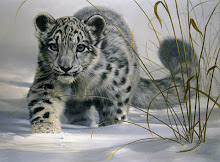
The Great Indian Rhinoceros, also called the Greater One-horned Rhinoceros, is characterized by the single horn on its nose and by the loose folds of its thick skin. The horn is seen on both male and female Rhinos but not young ones below a year in age. It consists of keratin - a protein present in human hair and nails - and can grow from 20 to 60 cm in size. Adult male Rhinos have the largest horns.
Zoological name: Rhinoceros Unicornis
Range: The Great Indian Rhinoceros is found in India, Bhutan and Nepal in wildlife sanctuaries in the sub-Himalayan belt. It is found in the Brahmaputra valley in Assam (where the largest population of Rhinos worldwide exists in Kaziranga National Park), in the Chitwan valley in Nepal and in lowland Bhutan.
Estimated population: The estimated population of wild rhinoceroses in national parks worldwide is approximately 2400 of which 1600 are in India, primarily in the Kaziranga and Manas wildlife sanctuaries in Assam in North East India.
Physical characteristics: The Indian Rhinoceros was described by early travelers as a unicorn because of its single horn. The Rhinoceros has a somewhat pre-historic appearance and looks as if it has armor plates, because of the loose folds of its thick hide, which is a dark brown or blackish color and can also be gray in some cases. A fully-grown male Rhino can reach up to 1.8 meters high and 3.6 meters long and can weigh over 2 tonnes (or 2000 Kg). The distinctive horn of the Rhinoceros is seen after Rhinos are a year old and can grow to a size of 20 - 60 cm.
Habitat: The Indian Rhinoceros is found in marshy lowlands. Tall grass, thick forests, and swamps are Rhino territory. The Rhino spends a significant amount of time during the day, wallowing in mud or marshy pools.
Diet: The Indian Rhinoceros feeds on grass, leaves and twigs. It usually feeds in the morning and evening and spends the hot daytime cooling off in a mud wallow. The prehensile upper lip of the Rhino helps it in feeding.
Behavior: The Indian Rhinoceros is usually a solitary animal. Calves live with their mothers for several years. Male Rhinos are known to fight over territory and during the mating season. The Rhino's horn is used as a threatening display as well as to attack other male Rhinos or any intruders in its territory. Rhinos can run fast, up to 55 Kmph for short distances and rely on their sharp sense of smell and hearing. Their eyesight is comparatively poor. Rhinos live for 30-45 years in the wild and have been recorded as living up to 47 years in captivity.
Status: The Indian Rhinoceros is an endangered species. The pressure of human populations on the last remaining habitats of the rhinoceros, poaching for the sake of its horn and tiger predation of its calves are threats to its continued survival in the wild.
Tourists can see the Indian Rhinoceros in the Kaziranga National Park and Manas Wildlife Sanctuary in Assam.
We visit Kaziranga National Park on our tour "Big Five Of India" & Customized trip for Rhino watching tours.
For tour details please visit our website http://www.naturetrailsindia.info or email: ntrails@gmail.com





